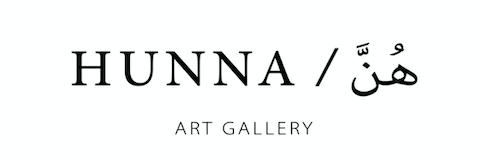When Zayn Qahtani was younger, she couldn’t decide whether she wanted to be an artist or an archeologist. Never one to settle, she turned this dilemma into a dance, integrating archeological thinking into her artistic practice. Spanning painting, drawing and sculpture, Zayn’s work is about the excavation of the imagination, of ancient cultures, and of her own emotions. Attuned to nature’s ecosystems, she works intimately with the earth itself, hand-making her own paints from plants and minerals and utilising recycled materials. Her style of visual storytelling is dynamic and multisensory; a process of delving deep before bringing things to light.
Brought up in the town of A'ali in Bahrain, Zayn’s art is informed by what she describes as the country’s “soul culture” – and by the parts of it that have been lost to time. She is fascinated by the mysteries of the Dilmun civilisation, the ancient kingdom that once spread across Eastern Arabia. With its capital in what is now Bahrain, Dilmun was a rich hub of trade and commerce, and an even richer locus of mythology. In works such as ‘In The Beginning’ (2022), Zayn draws on the Sumerian creation myths that describe Dilmun as a paradise, a magical garden enjoyed by deities such as Ninhursag, the Mesopotamian mother goddess. At the centre of this sculpture are two naked figures who dance the earth into existence, their arms overlapping in yonic shapes to form the elements. Just as Bahrain is largely desert today, Zayn believes these cultural narratives have dried up with the land. The lack of recognition for ancient goddesses in contemporary studies of Dilmun’s history is something she responds to in ‘Ninhursag’s Ritual’ (2022), a triptych which opens to reveal another joyful scene of women dancing and bathing in freedom.
Zayn has been drawing and painting for as long as she can remember, and her creative interests have taken many forms. Upon finishing high school in 2014, she embarked on a fashion degree at Bahrain’s Royal University for Women. Her eye for textiles can be seen in her repurposing of materials, like the acrylic beads and antique bells that hang from ‘In The Beginning’. After graduating in 2019, Zayn traveled widely, drawn to places as diverse as India and Georgia, until the pandemic curtailed movement and forced her to return home to her studio in Bahrain's Amwaj Islands. But with the stasis of lockdown came the stasis of her practice.
Craving a change of scene, Zayn spent the first half of 2021 in the small town of Whitchurch in Hampshire, England, a move she describes as pivotal to her career. With her sketchbook and camera in hand, she would walk through the forest each day, enchanted by the diversity of flora and fauna. By crushing rocks and minerals into pigments, Zayn brought the environment around her into her art. Working with both found and sourced natural pigments, Zayn imbues desert scenes such as ‘Growing Pains’ (2021) and ‘I Bathed My Hair in The Night River’ (2021) with the richness of real earth, evoking the long-lost gardens of Dilmun. Across her work, she uses Lapis Lazuli for sky and water, chalk from a river in Whitchurch for white, earth from the ground in Whitchurch for red, and Stil De Grain – an ancient pigment made from Persian buckthorn berries – for gold. More recently, she’s been experimenting with pigments such as Amethyst and Malachite.
In the process of bringing ancient mythologies to the fore, Zayn weaves together a personal one. Emotions such as pain, longing and tenderness are etched into the faces of her flowers and stars, as her own experiences ripple through her canvases. Six golden figures embrace one another in ‘Touch (An Absence of Feeling)’ (2021), a work born from the isolation she experienced as an immunocompromised person during the pandemic. Zayn suffers from Uveitis, a condition that impairs her vision and has caused her to develop cataracts. In turn, cataracts have, at times, inhibited her ability to see colour properly. Out of this hardship came a series of black and white charcoal and carbon pictures, including ‘if you’re listening’ (2021) and ‘child of an eclipse’ (2021); eyes glint with tears in these images, but amongst the sorrow is a sense of catharsis and growth.
As a means of healing, Zayn focuses on making her other senses sharper. In 2020, she undertook an online diploma in Sound Therapy from Toronto’s Institute of Traditional Medicine. Whenever she makes art, music fills her studio, whether it’s the sound of the Native American flute, the singing of crystal bowls, or subtle yet repetitive drumming. Approaching creation as an act of ritual, Zayn sets intentions before each session, and infuses the air with incense and oils. Her passion for music and movement can be felt in her practice. It made her a prime candidate for Arusha Gallery’s group show ‘Chorus’ (Edinburgh, February – March 2022), which gathered together artists inspired by rhythm, harmony and sound.
Zayn’s first UK exhibition was at the Wilder Gallery in London in 2021. Showing in the city was a turning point, she says, in her creation of undiluted, unfiltered work. Ever since her first trip to London aged nine, she has been captivated by its energy, pace and eclecticism. She hopes to relocate there this year, further invigorating her work with the momentum of the metropolis.
Wherever she finds herself – surrounded by people, forests or desert – that momentum will never be hard to find for an artist as animated as Zayn Qahtani.
